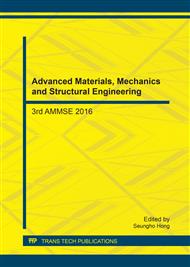[1]
Y.T. Jiang, Y.L. Jiang, Applications of modern electrostatic technology in food and agricultural produce procesiing, Food Science, 29(11), (2008), 674-679.
Google Scholar
[2]
H.F. Guo, J. Wang, K. Wang, Applications of high-voltage electrostatic technology in food processing, Presevation and Processing, No. 2, (2008), 1-3.
Google Scholar
[3]
W.Q. Ke, Applications of electrostatic technology in food processing, Chemical Technology, No. 9, (2012), 121-133.
Google Scholar
[4]
S.Y. Jane, P.A. Huang, C.H. Wu. Applications of high voltage electrostatic field in fresh food preservation, TFRI Newsletter, No. 39, (2012), 49-51.
Google Scholar
[5]
M. Fuchigami, N. Hyakumoto, etc., Texture and histological structure of carrots frozen at a programmed rate and thawed in an electrostatic field, J. Food Science, 59(6), (1994), 1162-1167.
DOI: 10.1111/j.1365-2621.1994.tb14667.x
Google Scholar
[6]
X. He, R. Liu, etc., Effect of high voltage electrostatic field treatment on thawing characteristics and post-thawing quality of frozen pork, J. of Food Engineering, 115(2) (2013), 245–250.
DOI: 10.1016/j.jfoodeng.2012.10.023
Google Scholar
[7]
Santetsu Engineering, Information on http: /www. depak. jp/en.
Google Scholar
[8]
J. Wijnoogst, Coating pellets by means of electrostatic loading technologies, Feed Tech, 6 (5), (2002), 25-26.
Google Scholar
[9]
K. Marthina, S. A. Barringer, Confectionery coating with an electrohydrodynamic system, J. Food Sci, 77(1), (2012), 26-31.
DOI: 10.1111/j.1750-3841.2011.02501.x
Google Scholar
[10]
S. A. Barringer, N. Sumonsiri, Electrostatic coating technologies for food processing, Annu Rev food Sci Technol, No. 6, (2015), 157-169.
DOI: 10.1146/annurev-food-022814-015526
Google Scholar
[11]
S.M. Shen, Food material and cooking technology, Chinese Cuisine Institute, Taipei, Taiwan (1996).
Google Scholar
[12]
J.Y. Shih, T.N. Lee, A.K. Lee, A training course of Chinese cooking, Chuan Hwa Book Co., LTD, Taipei, Taiwan (2011).
Google Scholar
[13]
X.R. Tsai, New knowledge of cooking equipement: electrosataic water thawing device, Biweekly Tarde Perspective, No. 353, (2012), 12-13.
Google Scholar
[14]
New Defrost Technology. Inc. Information on http: /www. efid-tec. com/tw.
Google Scholar
[15]
Editorial Department, Stevia Food Group has created an innovative supply chain for catering business: introducing high voltage electrostatic facilities to both cold and hot chains, Modern logistics, No. 40, (2009), 42-48.
Google Scholar


